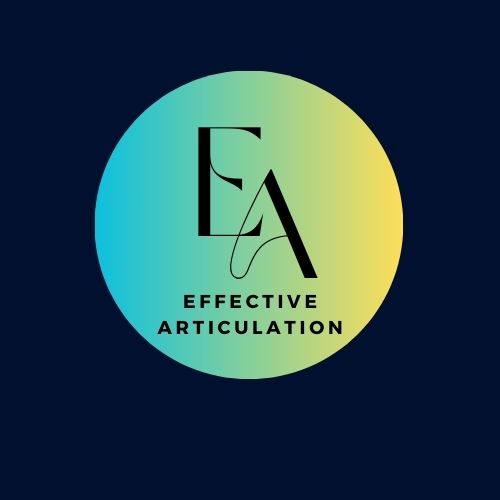Nonverbal communication is more than just a supplement to what you’re saying; it’s a major player in how your message is received.
Picture this: you’re giving a presentation, speaking all the right words, but your body language is closed off, and your face is expressionless. Chances are, your audience might miss a lot of what you’re trying to convey. Words and nonverbal cues go hand-in-hand.
Body language, facial expressions, and gestures form a trifecta that can either enhance or undermine your message.
A confident posture can make you look more credible, while eye contact can establish a connection. Even the simplest gesture can reinforce what you’re saying, making your message more memorable.
Let’s not underestimate the smile. It can set a positive tone and make you relatable.
Why does nonverbal communication matter so much in presentations?
For one, it adds depth and weight to what you’re saying. Imagine explaining a complex idea. Your words might do the heavy lifting, but your hand movements and facial expressions can act as helpful guides, leading your audience through your thoughts. Nonverbal cues make abstract concepts more concrete and easier to grasp.
Now, talking numbers, studies suggest that a sizable chunk of our communication is nonverbal.
According to Albert Mehrabian’s research, a whopping 93% of communication effectiveness is determined by nonverbal cues, with only 7% relying on the actual words spoken. Quite the eye-opener, right?
This stat underscore how critical it is to pay attention to your nonverbal communication during presentations.
In the realm of presentations, nonverbal communication can be the dealmaker or breaker. It’s like the secret sauce that can transform a flat speech into a compelling narrative.
By mastering this, you can become a more persuasive and engaging speaker, ensuring that your audience not only hears your message but truly understands and connects with it.
Key Elements of Nonverbal Communication
Body language covers everything from your posture to your movements. Standing straight and open can signal confidence and openness, making your audience feel more comfortable and receptive.
Imagine the difference between someone standing with arms crossed and someone using open gestures – it’s night and day.
Facial expressions are your window to conveying emotions without saying a word. Smiling can create a sense of approachability and warmth, while furrowing your brow might show you’re deep in thought. Practicing your expressions in the mirror can help you become more aware of what you’re projecting.
Eye contact is powerful. It can build a connection and establish trust with your audience. Maintaining eye contact but not staring can make individuals feel recognized and valued, pulling them into your message more effectively. Think of it as a bridge that keeps your audience engaged and attentive.
Gestures can reinforce your message. Using your hands to explain or emphasize points can help underline important details, making your presentation more dynamic. Just ensure your gestures are natural and not too exaggerated, as overdoing it can distract rather than aid.
Personal space matters. Being mindful of how close you stand to your audience members can affect how comfortable they feel. Respecting personal boundaries creates a sense of safety and shows that you’re considerate of others’ comfort levels. This is especially crucial when interacting with diverse audiences where personal space norms might vary.
How Nonverbal Communication Enhances Audience Engagement
Building rapport with your audience is crucial to making your presentation more interactive and memorable.
A warm smile, open gestures, and nodding when others are speaking shows you’re engaged and approachable. This can create a friendly atmosphere where your audience feels more comfortable participating and asking questions.
When you effectively use nonverbal communication, you increase audience retention and understanding. Nonverbal cues, such as eye contact and hand movements, help highlight key points and make your message more vivid.
A dynamic presentation, utilizing a combination of verbal and nonverbal methods, keeps everyone hooked and helps them recall information later.
Nonverbal communication can turn a static presentation into a dynamic experience. Your expressions, gestures, and movements can add a layer of energy and charisma that plain words might lack.
It’s not just about delivering information but making that information come alive through interaction and engagement.
Take a look at successful speakers: TED Talks are a great example. The best speakers use a mix of verbal and nonverbal techniques to capture and maintain audience interest.
They might pause for effect, use hand gestures to emphasize points, or walk around the stage to engage different sections of the audience. These nonverbal tactics make their presentations more relatable, memorable, and impactful.
Developing Effective Nonverbal Communication Skills
Self-awareness is your starting point. Get a good grasp on how you naturally use nonverbal cues by observing yourself.
Record your practice sessions or stand in front of a mirror and watch your body language, facial expressions, and gestures. It may feel awkward initially but it’s super insightful.
Next up is practice. The more you practice, the more natural your nonverbal communication will become.
Rehearse your presentations in front of friends or colleagues. Ask them to note if your body language matches your message and if your gestures seem natural and purposeful.
Feedback from others is golden. Constructive criticism from peers, mentors, or even professional coaches can help fine-tune your nonverbal skills. Sometimes, others catch things you miss, and their perspective can be very enlightening.
Integration into daily interactions is key. Nonverbal communication shouldn’t just be a ‘presentation thing’. Incorporate these techniques into your everyday conversations. The more you use them, the more effortless they will become during your presentations.
Confidence in nonverbal communication grows with time and practice. Don’t get discouraged if it doesn’t click right away. Keep refining your skills, stay mindful of your cues, and you’ll see a notable difference in how your audience responds to you.
Common Pitfalls and How to Avoid Them
Mixed signals can happen when your words say one thing, but your body language says another. Imagine talking about a great success while your shoulders are slouched and you’re avoiding eye contact. This mismatch can confuse your audience. Always ensure that your nonverbal cues align with your message.
Gestures should be helpful, not distracting. Overusing gestures or using them incorrectly can divert attention away from your message. Keep your movements purposeful and relevant to what you’re saying. If you’re unsure, practice with a steady rhythm to find a balance.
Cultural differences can make or break your presentation. Nonverbal communication norms vary widely across cultures. What might be a positive gesture in one culture could be offensive in another. Do your homework on your audience’s cultural background and adjust your nonverbal cues accordingly.
Everyone gets nervous, but excessive nervous habits can be a major distraction. Fidgeting, pacing, or repetitive movements can make you appear less confident. Practice staying composed under pressure. Techniques like deep breathing or focusing on your key points can help maintain your poise.
Remember, consistency is crucial. Your nonverbal cues should always support your verbal message. By being mindful of how you use body language, facial expressions, and gestures, you’ll be more effective in delivering your presentation and keeping your audience engaged.
I hope you found this post helpful! Please let us know what you think by leaving a comment below.
If you have any topics, you’d like to cover in future blog posts, please share your suggestions in the comments.
Disclosure: If you click on the affiliate links provided in this article and purchase the product, I will receive a small commission from the company of the product. You will not pay anything extra for your purchase. You can read the affiliate disclosure for more information.




4 thoughts on “Importance Of Nonverbal Communication In Presentation”
Hi Kavitha,
This article provides a comprehensive look into the significance of nonverbal communication in presentations. I appreciate how it emphasizes that nonverbal cues—like body language, facial expressions, and eye contact—can either reinforce or detract from your spoken message. The reference to Albert Mehrabian’s research, highlighting that 93% of communication effectiveness comes from nonverbal cues, is an eye-opener. It’s a reminder that words alone aren’t enough to engage an audience.
The practical advice on becoming more self-aware of your gestures and movements is invaluable, especially the suggestion to record practice sessions and get feedback. It’s true that nonverbal communication can make a presentation more dynamic, engaging, and memorable. I also found the discussion on cultural differences insightful, as it underscores the importance of adapting nonverbal communication based on the audience’s background. This is a thoughtful and well-rounded piece on how to master nonverbal communication for presentations.
Cheers
John
Hi John,
Thank you for your insightful comment! I’m glad you found the article on nonverbal communication comprehensive and enlightening. It’s fascinating how much impact nonverbal cues can have on the overall effectiveness of a presentation. The statistic from Albert Mehrabian really drives home the point that effective communication goes far beyond just words.
I appreciate your thoughtful reflections and am glad the article resonated with you!
Cheers,
Kavitha
The way we use our eyes can significantly impact how others perceive us and how effective our communication is.
Eye contact helps establish trust. Making consistent, natural eye contact signals to others that you are present and engaged. It shows that you are open and interested in what they have to say, which fosters a sense of connection. In contrast, avoiding eye contact can create a feeling of distance or distrust, making others question your sincerity. That’s my tow penny worth anyway/ Our eyes are incredibly expressive, and eye contact can communicate emotions that words often cannot.
Hi Catherine,
I completely agree with your “two penny worth”, eye contact really does play a huge role in communication! It’s amazing how something as simple as where we focus our gaze can either build trust or create distance. I love how you mentioned that eye contact shows you’re present and engaged; it’s such a fundamental part of creating connections, whether in professional settings or personal conversations.
And you’re absolutely right! Our eyes can express so much emotion that words sometimes can’t capture. It’s often the unspoken cues that leave a lasting impression. Thanks for sharing your insights!
Warm regards,
Kavitha